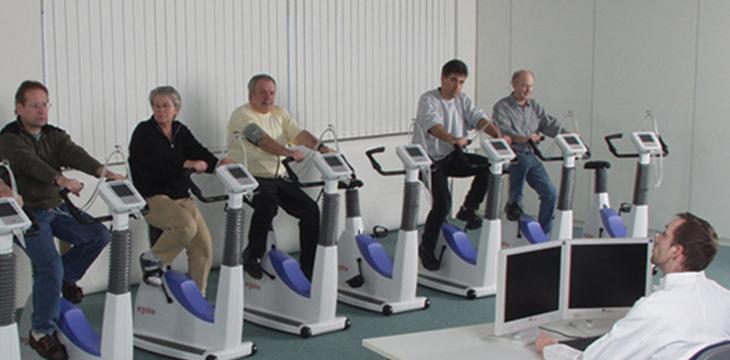Cardiac Rehabilitation is the name given to all of the procedures performed to bring people with cardiovascular disease to physical, psychological and functional capacity.
Cardiac rehabilitation is a program implemented to reduce the risk of heart patients having a problem with their heart again in the future and to enable patients to return to their daily lives more easily.
It is aimed that the patient, who is physically, mentally and socially restricted due to cardiac rehabilitation heart disease or surgery, can return to work and social life, improve his functional level, ensure symptomatic recovery, relieve the anxiety and depression of the patient, return to his social life and prolong the life of the patient.
While patients who previously had infarction or bypass were taken to bed rest, which lasted up to several months, it was observed that patients who moved early later adapted to their daily lives more easily and were less exposed to complications, and cardiac rehabilitation was born under the light of the studies conducted in this direction.
Today, the importance of cardiac rehabilitation in developed western countries has been understood and is widely applied.
In our country, the importance of this issue is increasingly understood with the encouragement of the Ministry of Health.
With cardiac rehabilitation, people with heart disease can be saved from withdrawing from social life and restricting activity.
The main purpose here is to increase the daily activity of the patient and to change the natural course of the disease and to improve the quality of life of the person.
With cardiac rehabilitation programs, it has been shown that there is a 30% reduction in the mortality rates and risk of second infarction due to heart diseases.
Today, myocardial infarction, coronary artery bypass surgery, coronary angioplasty, cardio myopathy, heart failure, presence of hypertension, pacemaker implantation, after heart valve diseases and valve replacement, after cardiac transplantation.
Cardiac Rehabilitation is applied to improve the work and private life of the person, which is restricted physically, socially and psychologically due to any heart disease, to reduce the level of anxiety, depression of the patient, to adapt to the social environment, to correct any adverse conditions that may occur in the heart.
Cardiac rehabilitation is a very useful program for the patient when the special conditions of the patient, the course of the disease, and risk factors are determined and applied by a special team.
The people in the team should be the physician, rehabilitation specialist, physiotherapist, nurse, psychiatrist or psychologist, social worker and occupational therapist who follow the patient cardiacly.
Exercise is actually the best and most natural remedy for the heart. With the cardiac rehabilitation program, people with heart disease can be saved from being isolated, withdrawing from social life and restricting activity. In this way, it is possible to enable heart patients to rejoin life and to prolong their life in a better quality.
Although the steps of rehabilitation vary for each patient, there are patients with risk factors for intensive rehabilitation.
What are the benefits with cardiac rehabilitation?
General condition increase, decrease in heart rate, decrease in blood pressure, contraction power of the heart muscle, increase in oxygen consumption and exercise capacity, increase in heart muscle circulation, decrease in body fat, decrease in blood cholesterol and triglyceride level, decrease in atherosclerosis, improvement in psychological state expected.
How is it done?
The patient to be included in the cardiac rehabilitation program is carefully evaluated by the cardiology specialist.
Depending on the risk status, a physical exercise specialist program is determined by that physician.
In addition to aerobic exercises, patients are included in the program of breathing, posture, relaxation and exercises that increase mild muscle strength.
Aerobic exercises are performed with computer-controlled highly developed exercise devices that are developed for this job and monitor the patient's ECG, heart rhythm, blood oxygen level, blood pressure.

